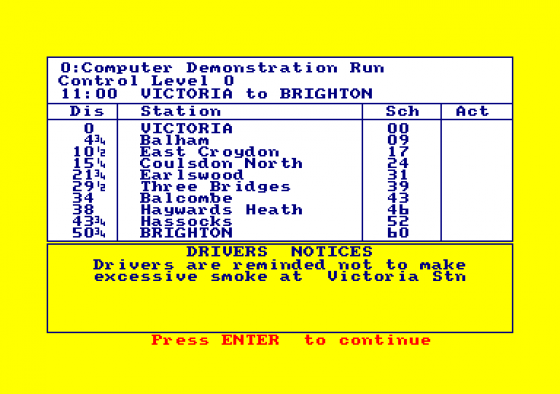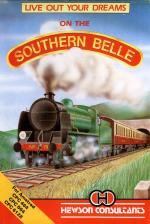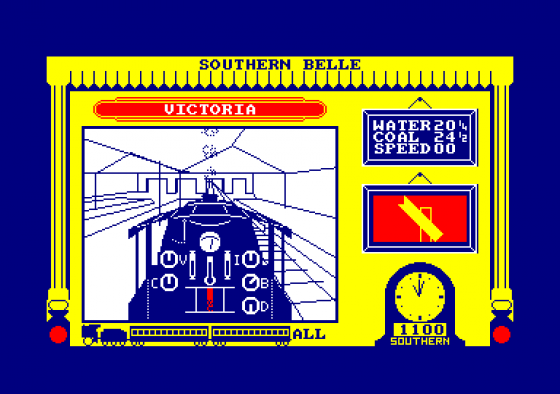
Amstrad Computer User
 1st November 1985
1st November 1985
Categories: Review: Software
Publisher: Hewson Consultants
Machine: Amstrad CPC464
Published in Amstrad Computer User #12
Southern Belle
I can understand flight simulators, I can understand driving simulators, but one begins to wonder why anyone would want to simulate a steam train. I know that all school boys grow up with the desire to drive steam trains, or they did in my day, but I don't know if the that feeling of excitement can be simulated in your own living room.
Having said all that though, I have to say that I quite enjoyed my trip from Victoria to Brighton, even though I arrived 11 minutes late (who said it wasn't true to life?), having run out of coal and water about four miles from Brighton and coasted into the station at a leisurely seven miles an hour! I only tried the program on a training run, but was in full control.
Fortunately, this did mean that I only had to stop once (at Brighton) as I don't think I could have coped with all the stopping and starting on a full run. Those of you, who like myself, remember Frankie Howerd and the Girls from St. Trinian's when they stole a train, may think that there wouldn't be much to simulate - how wrong could you be? - as well as the regulator (throttle) and brakes, one has to control the cut off (% steam used), blower (in tunnels and when de-regulating), damper (air supply) and injector (water supply). All these are precariously balanced so must be constantly monitored.

The screen shows the gauges and knobs as you stand on the foot-plate, while the countryside and landmarks of the South Downs rush by (meander might be a better word). An old, railway style clock gives a constant reminder of how far behind schedule you are, while the ominously low levels of remaining coal and water are also shown along with your speed, which can easily exceed 70 miles an hour on the downhill sections.
The track gradient can also be shown at the touch of a button as can the current distance from and to London and Brighton. The train starts, naturally enough, at rest in Victoria station, where one turns the cut off to full and regulator to the halfway point - not forgetting to sound the whistle before pulling away. Slowly but surely the train pulls away from the confines of the station and builds up speed as it passes over the Thames and past the old Battersea power station the famous old landmark being drawn in wire frame 3-D with hidden line removal.
A little further down the line we reach the first station, Battersea Park, followed by that travellers' nightmare, Clapham Junction. By now the regulator is fully opened and the cut off reduced to save steam. Every so often the fire box doors are opened so that a little more coal may be shovelled onto the glowing fire. The rate of water injection being set to keep the water level to about the three quarters filled point. The damper is adjusted to keep the smoke to a consistent grey plume while the fire doors remain closed to build the heat of the fire.
The train continues up the steady incline towards Quarry Tunnel, about 17 miles out, which marks the top of the climb, the train may now accelerate quite considerably down hill and so on to the final destination. I don't know what to make of this program, by the time I was nearing Brighton, the tension caused by the impending exhaustion of my coal and water supplies was quite great and yet for a lot of the journey I seemed to have been rather twiddling my thumbs.
I'm sure that on the more difficult levels I would have found more to do, but at first appearance, the program seems to be more aimed at those who can remember travelling on this sort of train rather than those who can only ever have dreamed of it, and who would probably prefer the spills and thrills of a car or flight simulator. However, I'm sure that this simulator is more true to life than many of those other genre, but perhaps that is also its major failing.
Other Reviews Of Southern Belle For The Amstrad CPC464
Southern Belle (Hewson)
A review by D.M. (Home Computing Weekly)
Southern Belle (Hewson)
A review
Southern Belle (Hewson Consultants)
A review





